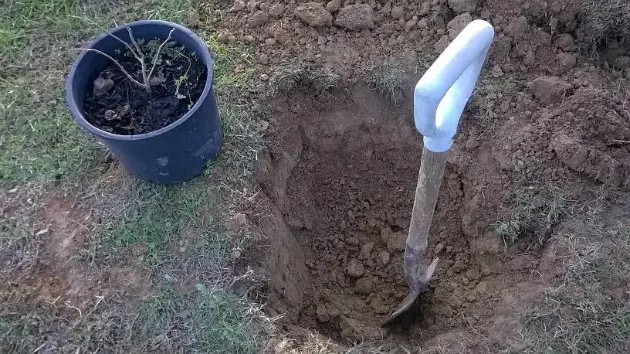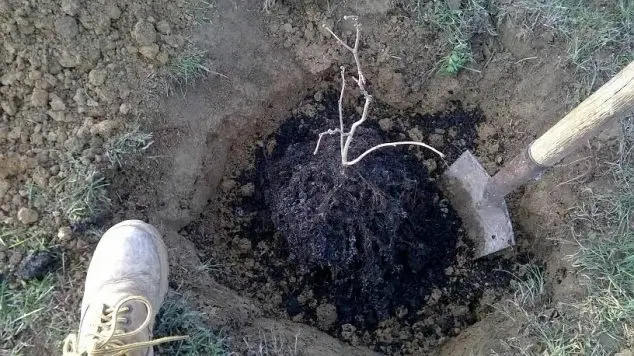Are you happy when you can grow something that you don’t have to buy? Do you like nuts? Do you like a quick return on investments in your gardening and tree planting? Then, you just may want to plant hazelnut trees! The edible hazelnuts are a versatile, tasty food with good nutrition. They are even thought to be a good cancer preventative food! Growing hazelnuts is a great source of protein when homesteading and they are also a great way of helping your animal friends. Here is how to plant a hazelnut tree and why it is a very practical, rewarding thing to do.
Planting Hazlenut Trees For Self-Sufficiency
Common Names: Hazelnut Tree or Hazel Plant or Hazels
Scientific Name: Corylus (deciduous trees and large shrubs native to the temperate Northern Hemisphere)
Hazelnuts are an excellent crop to grow because they are low-maintenance, environmentally friendly, and highly versatile. They thrive in a variety of climates, especially in temperate regions, and are drought-tolerant once established, making them a sustainable option for water-conscious growers. Hazelnut trees are also valuable for soil health, as their dense root systems prevent erosion and improve soil structure.
Hazelnuts Are Great For Aiding In Homestead Self-Sufficiency
- Yummy small, sweet nuts for wholesome and delicious and savory foods or deserts
- Native tree, Wildlife beneficial
- Bears fruit(nuts) within 3-4 years- FAST!
- Makes an attractive hedge row
- You only need two trees for them to pollinate each other
- Good for growing in Zones 4-8
- Attractive, growing as high as 18’ x a 12’ spread
Hazelnut tree growth rate: Growing hazelnuts is a fantastic opportunity. Hazelnuts are great for homestead self-sufficiency because you can grow and harvest nuts at home without having to plant trees that will grow huge, and take years before they produce. In fact, hazelnut trees have a fast growth rate and the first hazelnut harvest can be expected within 2-5 years of planting. You can expect a decent size hazelnut crop by by year six or seven. Mature trees can produce up to 25 pounds of hazelnuts in a single year!
Hazelnuts can be enjoyed raw, roasted, or blended into spreads like hazelnut butter. They make a great snack on their own, can be added to granola, oatmeal, or salads for extra crunch, or used in baking for cookies, cakes, and pastries. You can also chop them to top yogurt or use them in savory dishes like pesto or as a crust for meat or fish.

How To Grow A Hazelnut Tree
American hazelnuts (AKA American filberts) are native to the American Midwest, and the small tree grows well in fertile, well drained soil. They are suitable to USDA zones 4 through 8. They make an attractive hedgerow or individual plantings that can produce heavily and consistently. The most important thing to know if you want to grow a hazelnut that produces nuts is that you need more than one tree. Hazelnut trees require cross pollination from a different hazelnut cultivar to produce a nut crop and trees need to be within about 65 feet of each other for cross pollination to take place. Consult your local nursery for different pollinating varieties of filbert hazelnut trees.
What Is Needed For Growing Hazelnut Trees:
- Space for at least 2 trees – grow them 20 feet between them and no farther 50 feet apart so they are not too close but close enough together to pollinate
- Full sun
- Well drained soil
- 2 or more saplings purchased from a supplier of native Hazelnut trees
- Shovel
- Garden Gloves
- Hose for watering
Instructions for Planting Hazelnuts:
When to plant a hazelnut tree–
Plant in late fall, when the tree is dormant, but it is not too cold for the roots to take hold of their new home. Alternatively, in the early spring avoids extreme cold and provides time for growth before summer.
Where do hazelnut trees grow–
Hazelnut tree growing zone: Hazels grow best in Zones 4-9 which is most of the United States except for our hottest and coldest zones. They thrive in temperate climates with cool winters and mild summers. European hazelnuts (Corylus avellana) typically prefer zones 5–8, while American hazelnuts (Corylus americana) are more cold-tolerant and can grow in zones 4–9. Choose your locations with the above items in mind. Make sure your soil is well-drained and trees will get full sun.
How far apart to plant hazelnut trees–
Plant hazels about 20 feet apart. (At least 15 feet but no further than 50 feet.) Cross-pollination is essential for nut production, so planting at least two compatible varieties is recommended. Hazelnuts are wind-pollinated, so planting trees within 50 feet of each other is recommended.
How to plant hazelnut trees:
Dig the hole deep generously, making sure it is about twice as deep as the size of the root ball (the root ball is about the size of the container the plant is in). Keep the soil you remove digging easily accessible for refilling the hole.

If you are in doubt about the soil being well drained, you can test it once you have the first hole dug. Fill it with water, if it drains within an hour, it is sufficiently well-drained soil.
Refill the hole about 6 inches, loosening the clumps of soil as you push it back into the hole. You are making a soft, gentle “bed” to settle our sapling into. Remove your sapling from the container. You may want to use some clippers to cut it away from the plant, to avoid damage to the roots. Or you can do what I did and water the sapling, softening the soil and slide the sapling gently out of the container into the hole.

Then fill in the hole with the rest of the soil, loosening the soil clumps as you fill in the hole and bring the soil level up to the base of your tree. Water your newly planted tree with plenty of water, soaking it well enough to force out any air pockets. This is for the preservation of the roots.

For optimal nut production, keep the soil consistently moist during the first few years, especially during dry periods. Established trees are drought-tolerant but produce better with adequate water. Keep the base of the tree weed-free to reduce competition for nutrients and water. Prune annually to remove dead or diseased branches and maintain a strong, open canopy. This improves airflow and allows sunlight to reach all parts of the tree.
Some foods you will be to able to make with your nuts in just a few years from now; roasted hazelnuts, hazelnut milk, hazelnut butter add to granola and home made granola nut bars, baking and confections. This is the nut, that after all, makes the famous confection called Nutella. (affiliate link)
The Health Benefits Of Hazelnuts (Edible Nuts)
There are many health benefits of including hazelnuts as part of your well balanced diet.
Cardiovascular Benefits Of Hazelnuts
Hazelnuts are rich in unsaturated fats, the kind that are actually good for the heart. Much of this fat is oleic acid, shown to lower LDL “bad” cholesterol and raise the “good” HDL kind.
Cancer Prevention
Studies have found that the alpha-tocopherol type of vitamin E hazelnuts are so rich in may cut the risk of bladder cancer in half. Additionally, the manganese so abundant in hazelnuts goes a long way in protecting the body from cancer. Manganese is a constituent of an antioxidant enzyme produced in the mitochondria of the cells to protect the body from cancer.
Muscles
Hazelnuts are rich in magnesium and it plays an important role in regulating the amount of calcium that goes into and out of the cells of the body.
Skin Health
One cup of hazelnuts contains 86% of the recommended daily allowance of vitamin E. Vitamin E has been proven to protect skin from the harmful effects of ultraviolet radiation, such as skin cancer and premature aging.
Bone and Joint Health
About two thirds of the magnesium the body uses goes towards building the structure and strength of the skeletal system. Hazelnuts are also rich in manganese, a mineral essential for the growth and strength of bones. Post-menopausal women are often deficient in manganese and can benefit from its ability to increase the density of bone, and fight osteoporosis.
Nervous System
The nervous system needs amino acids in order to function, and amino acids require vitamin B6. Hazelnuts are rich in vitamin B6, allowing the nervous system to operate optimally.
Digestive Tract Health
Hazelnuts are rich in manganese, which is an enzyme activator and a catalyst in the synthesis of fatty acids and cholesterol. It also promotes protein and carbohydrate metabolism.
High in B Vitamins
Hazelnuts are rich in vitamins B1 (thiamin), B2 (riboflavin), B3 (niacin), B5 (pantothenic acid), B6 and B9 (folic acid). Vitamin B aids in efficient protein, carbohydrate and fat metabolism.
Conclusion
Plant a hazelnut tree, watch them grow, fruit, pollinate, attract wildlife, make a lovely hedgerow or border and finally bare nuts that you can harvest. If you are not yet a self-sufficiency nut, hazelnuts just may convert you! There are so many benefits to growing hazelnuts and hazelnuts have so many health benefits. Grow and enjoy!
“I went down into the garden of nuts to see the fruits of the valley…” Song of Solomon 6;11
Related Posts:

OurFamilyWorld says
I love hazelnuts. How I wish I had the space to plant a couple of American filbert large shrub plants.
Danielle says
I love this idea! I never would have thought about planting a hazelnut tree, but now you’ve inspired me to want this native shrub to Eastern North America.
Brandy says
I’ve been researching hazel trees and am planning to plant a few this spring. I learned that hazelnuts are often grown as multi-stemmed shrubs, which makes them perfect for smaller spaces in the yard. The Arbor Day Foundation has some great resources for choosing the right variety for my area, which has been super helpful.
I’m thinking of starting with bare root plants since they tend to establish a strong root system early on. It’s fascinating that the yellowish-brown catkins are not only ornamental but also play a vital role in pollination, ensuring better fruit production. Thanks for the tips—can’t wait to add some hazelnut trees to my garden!
Jenna Wood says
Honestly, I didn’t really even know how hazelnuts grew- I think it would be awesome to have such a hearty nut growing on the property. Thanks for the great tips and insight.
Aimee Smith says
Hazelnuts are some of my favorites! I never even thought of planting my own American hazelnut tree before you mentioned it. I would love to have one.
Daisy says
I had never thought of planting a hazelnut tree. Sign me up for planting several of them! I love, love, love hazelnuts.
Jody Smith says
I love hazelnuts and had no idea how good they are for you. This sounds like a must do activity for my household for sure!
Mistee Dawn says
I never knew how many awesome benefits it had! I need to plant a Hazelnut Tree!
Tim says
This is the 3rd season my hazelnut trees have been in the ground and they have recently set the pollen tassels, so I’m hoping for a few nuts this year! 🙂
marty walsh says
Planting 4 in my hedgerow this spring. The two year old container growns are overwintering on the outside of my greenhouse. Lame-O me didn’t get to it in time this past Autumn. So many people in the countryside in Ireland are planting those horrid Leylandii and manicuring their wild hedgerows to death. I’m going to be different and have wild edibles for me and the wildlife. Teach by example.